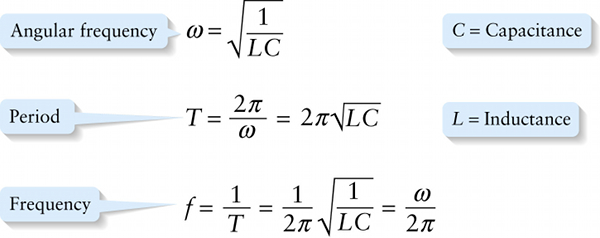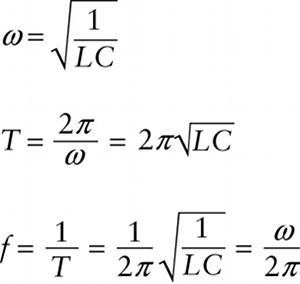Angular frequency, period, and frequency for an LC circuit (21-23)
Question 1 of 3
Question
Frequency
{"title":"Angular frequency","description":"Incorrect","type":"incorrect","color":"#99CCFF","code":"[{\"shape\":\"poly\",\"coords\":\"82,133\"},{\"shape\":\"rect\",\"coords\":\"10,16,12,16\"},{\"shape\":\"poly\",\"coords\":\"144,22\"},{\"shape\":\"rect\",\"coords\":\"1,27,29,50\"}]"} {"title":"Period","description":"Wrong","type":"incorrect","color":"#ffcc00","code":"[{\"shape\":\"rect\",\"coords\":\"1,127,23,153\"}]"} {"title":"Frequency","description":"Correct!","type":"correct","color":"#333300","code":"[{\"shape\":\"rect\",\"coords\":\"1,232,15,267\"}]"}Review
Table 21-1 tells us that k corresponds to 1/C and m corresponds to L. So the angular frequency, period, and frequency for the oscillations of an LC circuit are

The smaller the product LC of inductance and capacitance, the greater the angular frequency and frequency of the oscillations and the shorter the oscillation period.
